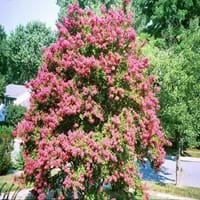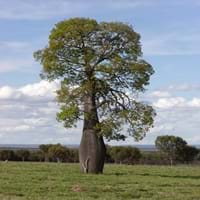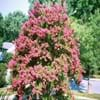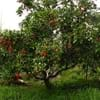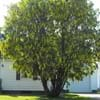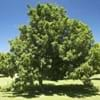Life Span
Perennial
Biennial
Origin
Not Available
Australia
Types
Lagerstroemia villosa, Lagerstroemia subcostata, Lagerstroemia microcarpa
Narrowleaf Bottle Tree, Pink Flame Tree, Rusty Kurrajong
Number of Varieties
Not Available
Habitat
Coastal Regions, Open Forest, Swamps
Subtropical climates, Subtropical forests
USDA Hardiness Zone
6-10
9-11
Sunset Zone
H1, H2, 7, 8, 9, 10, 12, 13, 14, 18, 19, 20, 21
H1, H2, 15, 16, 17, 18, 19, 20, 21, 22, 23, 24
Habit
Upright/Erect
Upright/Erect
Flower Color
Red
Crimson, Orange Red
Flower Color Modifier
Bicolor
Bicolor
Fruit Color
Green, Brown
Dark Red, Sienna, Chocolate
Leaf Color in Spring
Dark Green, Burgundy
Not Available
Leaf Color in Summer
Dark Green, Burgundy
Red, Green, Light Green
Leaf Color in Fall
Burgundy, Dark Red
Green
Leaf Color in Winter
Not Available
Green
Leaf Shape
Cylindrical
Lobed
Plant Season
Spring, Summer, Fall, Winter
Spring, Summer
Sunlight
Full Sun, Partial Sun
Full Sun, Partial Sun
Type of Soil
Clay, Loam
Loam, Sand
The pH of Soil
Acidic, Neutral
Acidic, Neutral
Soil Drainage
Well drained
Well drained
Bloom Time
Summer, Late Summer
Early Spring, Spring, Late Spring, Early Summer
Tolerances
Drought, Soil Compaction
Pollution, Drought
Where to Plant?
Ground
Ground
How to Plant?
From bulbs, Seedlings, Seperation, Stem Planting
Grafting, Seedlings
Plant Maintenance
Medium
Medium
Watering Requirements
Needs watering once a week, Requires watering in the growing season
Average Water Needs, Do Not over Water, Requires regular watering
In Summer
Lots of watering
Lots of watering
In Spring
Moderate
Moderate
In Winter
Average Water
Average Water
Soil pH
Acidic, Neutral
Acidic, Neutral
Soil Type
Clay, Loam
Loam, Sand
Soil Drainage Capacity
Well drained
Well drained
Sun Exposure
Full Sun, Partial Sun
Full Sun, Partial Sun
Pruning
Prune if you want to improve plant shape, Prune to stimulate growth, Remove damaged leaves, Remove dead branches, Remove dead leaves
Remove branches, Remove damaged leaves, Remove dead branches, Remove dead leaves, Remove dead or diseased plant parts, Remove deadheads
Fertilizers
fertilize every 2-3 weeks while growing, fertilize in growing season, Requires high amount of nitrogen
Nitrogen
Pests and Diseases
Beetles, Insects, Powdery mildew, Red blotch
Red blotch
Plant Tolerance
Drought
Drought, Pollution
Flower Petal Number
Single
Single
Foliage Texture
Medium
Medium
Foliage Sheen
Glossy
Glossy
Attracts
Birds
Hummingbirds
Allergy
allergic reaction, Asthma
allergic reaction, Skin irritation
Aesthetic Uses
Beautification, Cottage Garden, Landscape Designing, Showy Purposes
Showy Purposes
Beauty Benefits
Not Available
Not Available
Environmental Uses
Air purification, Food for birds, Food for insects, Nesting sites for birds, Prevent Soil Erosion, Shadow Tree
Air purification, Nesting sites for birds, Shadow Tree, Wildlife
Medicinal Uses
Not Available
Not Available
Part of Plant Used
Flowers, Stem, Tree trunks
Root, Seeds
Other Uses
Decoration Purposes, Economic Purpose, Showy Purposes, Used as Ornamental plant, Used for woodware, Used in construction, Used in Furniture
Used as Ornamental plant
Used As Indoor Plant
No
No
Used As Outdoor Plant
Yes
Yes
Garden Design
Feature Plant, Mixed Border
Feature Plant, Shade Trees, Street Trees, Tropical
Botanical Name
LAGERSTROEMIA 'Arapaho'
BRACHYCHITON rupestris
Common Name
Hybrid Crapemyrtle
Australian Flame Tree, Flame Bottle Tree, Illawarra Flame Tree
In Hindi
क्रेप मेहंदी
बोतल ट्री
In German
Crapemyrtle
Flaschenbaum
In French
Crapemyrtle
Bouteille Arbre
In Spanish
Crapemyrtle
Árbol de la botella
In Greek
Crapemyrtle
Μπουκάλι Δέντρο
In Portuguese
Crapemyrtle
Bottle Tree
In Polish
Crapemyrtle
Butelka Drzewo
In Latin
Crapemyrtle
Utrem ligno
Phylum
Spermatophyta
Magnoliophyta
Class
Magnoliopsida
Magnoliopsida
Family
Lythraceae
Sterculiaceae
Genus
Lagerstroemia
brachychiton
Clade
Angiosperms, Eudicots, Rosids
Angiosperms, Eudicots, Rosids
Tribe
Lagerstroemieae
Sterculieae
Subfamily
Lagerstroemieae
Sterculioideae
Importance of Crapemyrtle and Bottle Tree
Want to have the most appropriate plant for your garden? You might want to know the importance of Crapemyrtle and Bottle Tree. Basically, these two plants vary in many aspects. Compare Crapemyrtle and Bottle Tree as they differ in many characteristics such as their life, care, benefits, facts, etc. Every gardener must at least have the slightest clue about the plants he wants to plant in his garden. Compare their benefits, which differ in many ways like facts and uses. The medicinal use of Crapemyrtle is Not Available whereas of Bottle Tree is Not Available. Crapemyrtle has beauty benefits as follows: Not Available while Bottle Tree has beauty benefits as follows: Not Available.
Compare Facts of Crapemyrtle vs Bottle Tree
How to choose the best garden plant for your garden depending upon its facts? Here garden plant comparison will help you to solve this query. Compare the facts of Crapemyrtle vs Bottle Tree and know which one to choose. As garden plants have benefits and other uses, allergy is also a major drawback of plants for some people. Allergic reactions of Crapemyrtle are allergic reaction and Asthma whereas of Bottle Tree have allergic reaction and Skin irritation respectively. Having a fruit bearing plant in your garden can be a plus point of your garden. Crapemyrtle has no showy fruits and Bottle Tree has showy fruits. Also Crapemyrtle is not flowering and Bottle Tree is not flowering . You can compare Crapemyrtle and Bottle Tree facts and facts of other plants too.
